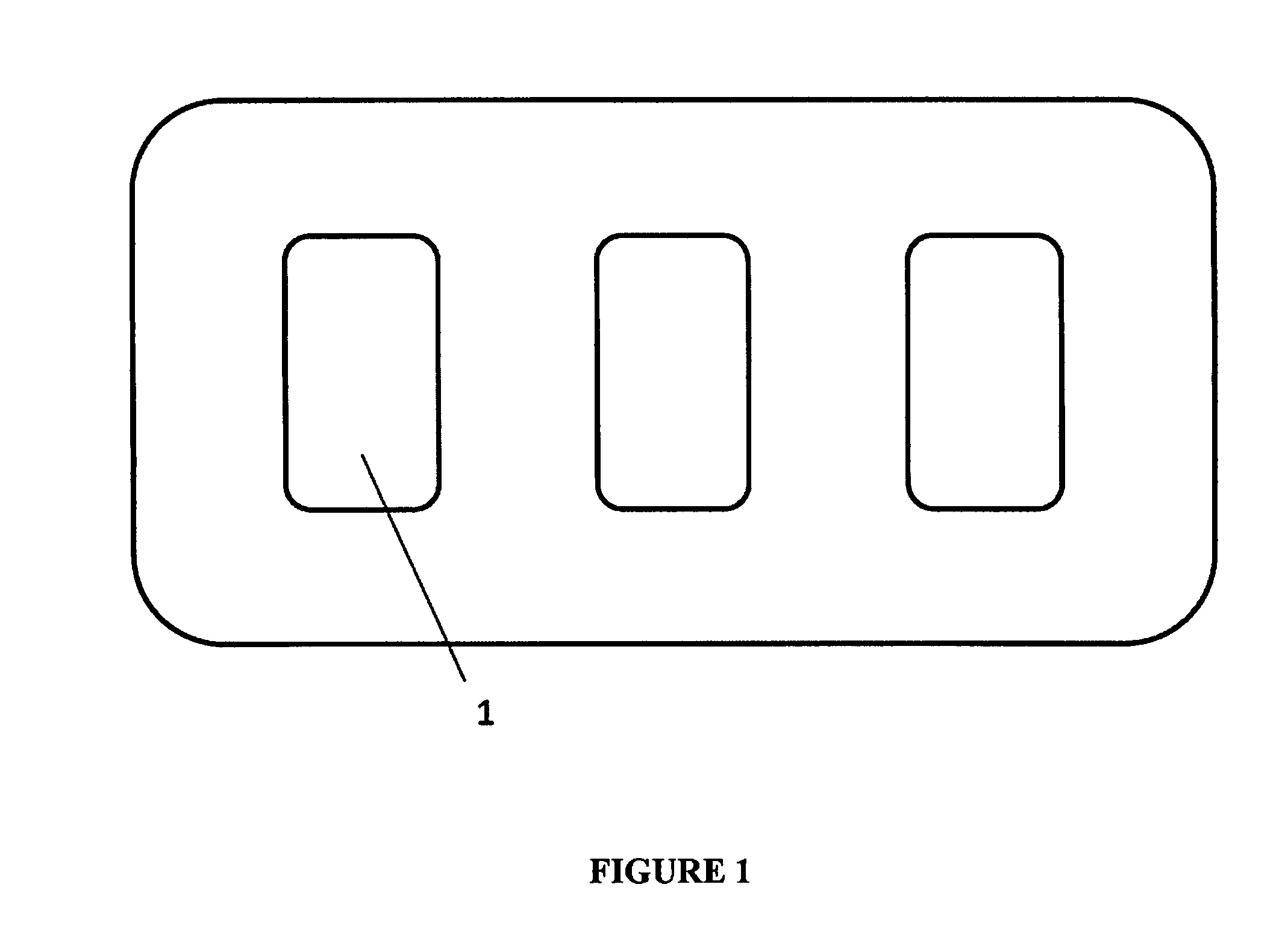On-Patient Autonomous Blood Sampler and Analyte Measurement Device
an autonomous, blood sampler technology, applied in the field of on-patient autonomous blood sampler and analyte measurement device, can solve the problems of increasing healthcare costs, reducing the clinical value of blood samplers, and reducing the clinical value of patients, so as to improve the clinical value and improve the clinical value. the effect of ecgs and the increase of the surface area of the electrod
- Summary
- Abstract
- Description
- Claims
- Application Information
AI Technical Summary
Benefits of technology
Problems solved by technology
Method used
Image
Examples
example 1
[0091]One embodiment of the apparatus of the invention comprises a disposable cartridge. FIG. 1 shows a top view of this embodiment having three individual assay units. Each assay unit [1] has its own piercing element, piercing mechanism, biosensor fluidic circuit, mechanism for generating vacuum or suction, means of moving fluid through the biosensor fluidic circuit, reservoir for collecting waste fluids, chemical reagents, biological reagents, buffers, reaction solutions, and electrodes.
[0092]FIG. 2 shows a side view of an individual assay unit [1] within the disposable cartridge. Each individual assay unit has a piercing element [2] and a sampling chamber [3] for obtaining a biological sample at the sampling site [4]. The assay unit has a buffer reservoir [5] and a self-restoring chamber [6] for creating a vacuum and collecting waste solution. The assay unit also comprises an electrochemical sensor [7] for detecting the molecule of interest.
[0093]FIG. 3 shows the architecture for...
example 2
[0097]In use the apparatus is attached to the patient's body preferably via a skin adhesive, patient data is entered into the apparatus, the patient data communicated to the hospital electronic records and an authentication signal is received. On authentication, a spring-loaded skin puncturing needle is released to puncture the skin at a pre-programmed time and the blood sample is allowed to collect at the site of skin penetration until a minimum volume is generated. The blood sample is transported through microfluidic channels into a sensor chamber with an electrochemical-based cardiac marker immunosensor. Immunoassay reagents are automatically introduced into the sensor chamber and the excess blood sample and reagents are collected in a waste chamber. The cardiac marker concentration is measured via an electrochemical signal. The data is made available locally via a display on the apparatus and transmitted to the hospital electronic records. The apparatus uses algorithms which are...
example 3
[0101]FIG. 4 shows a top view schematic of an alternative embodiment of the disposable cartridge docked onto the reusable portion.
[0102]The sampling tubing [11] of the disposable cartridge is wrapped around the cam of the peristaltic pump [12] on the reusable portion [13] to complete the pump. This allows the expensive part of the pump to be reused while the tubing which is in contact with blood is disposable.
[0103]The tubing of the disposable cartridge [11] is in fluidic communication with a common fluidic line [14] within the cartridge as shown in FIG. 5. Along the common fluidic line are individual diaphragm / membrane valves [15] opening to biosensor modules [16]. At the other end of the common fluidic line is a fresh saline reservoir [17] and a waste reservoir [18] and their access are controlled by their respective miniature actuator controlled valves.
[0104]Each individual membrane valve separates biosensor fluidic entry from the common fluidic line. Each individual membrane val...
PUM
 Login to View More
Login to View More Abstract
Description
Claims
Application Information
 Login to View More
Login to View More - R&D
- Intellectual Property
- Life Sciences
- Materials
- Tech Scout
- Unparalleled Data Quality
- Higher Quality Content
- 60% Fewer Hallucinations
Browse by: Latest US Patents, China's latest patents, Technical Efficacy Thesaurus, Application Domain, Technology Topic, Popular Technical Reports.
© 2025 PatSnap. All rights reserved.Legal|Privacy policy|Modern Slavery Act Transparency Statement|Sitemap|About US| Contact US: help@patsnap.com



